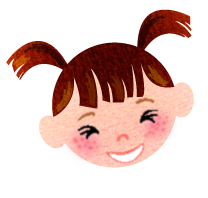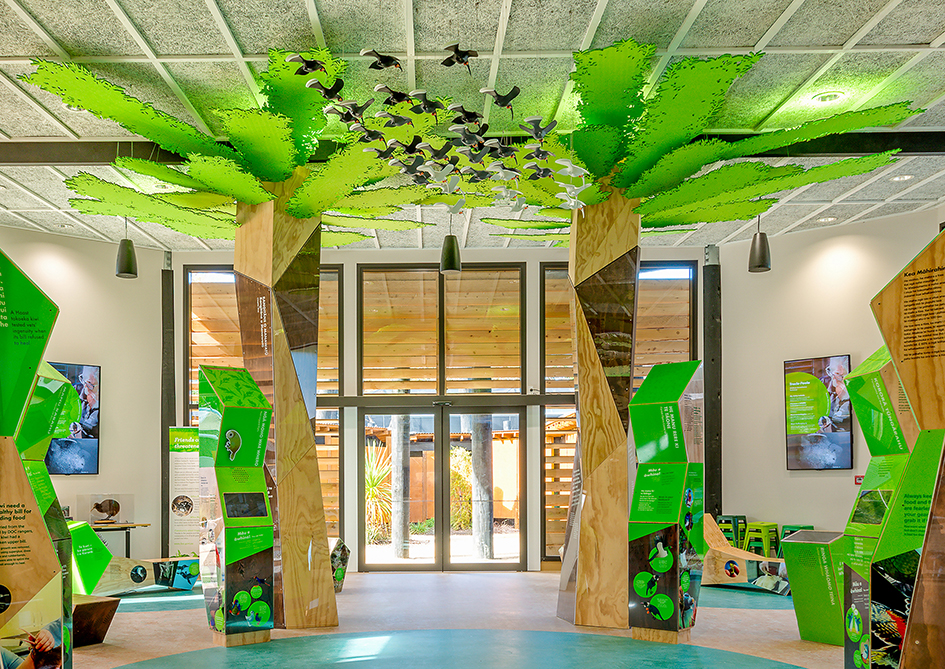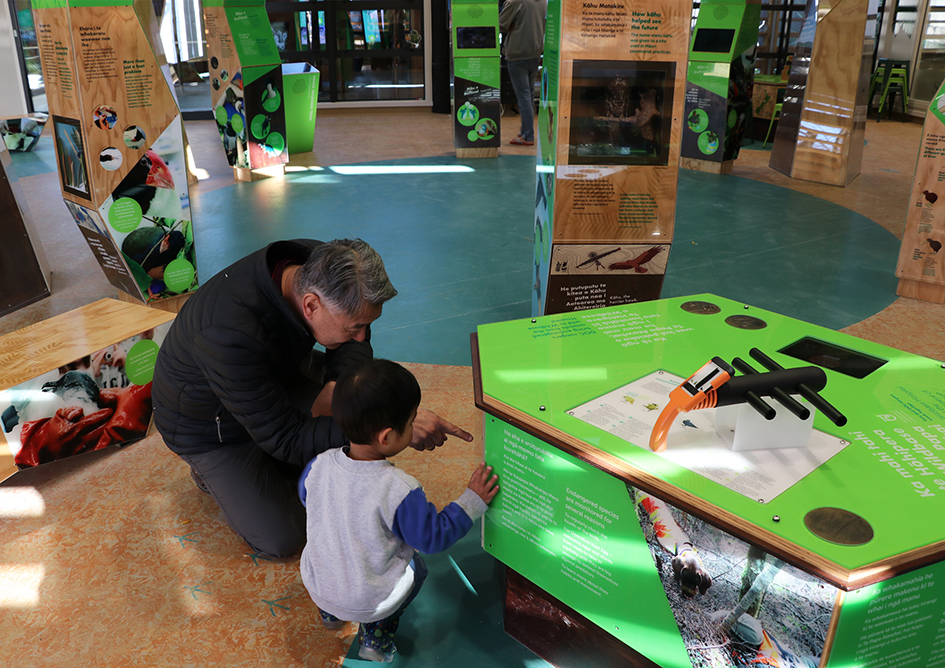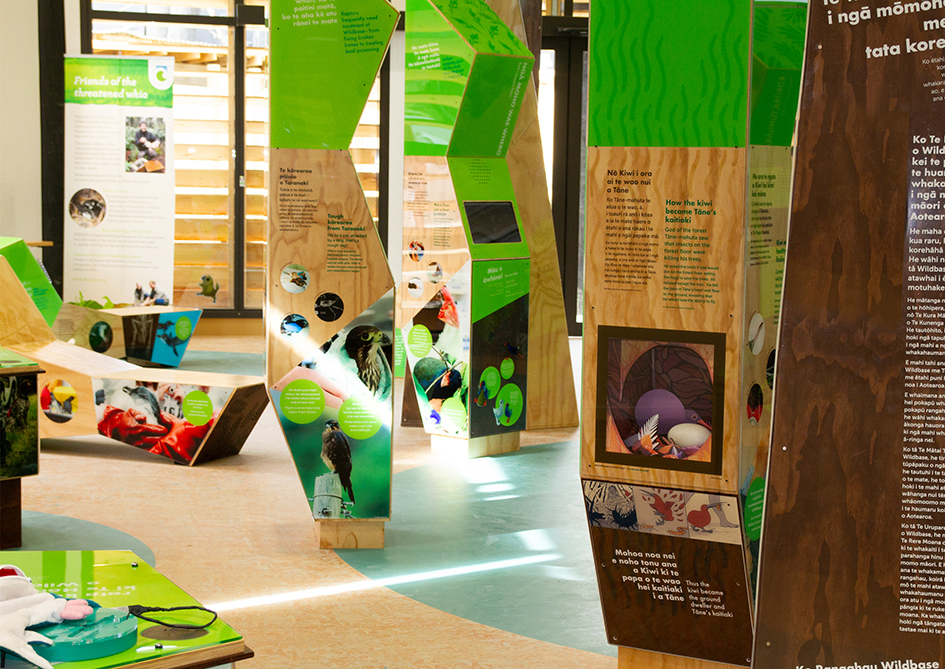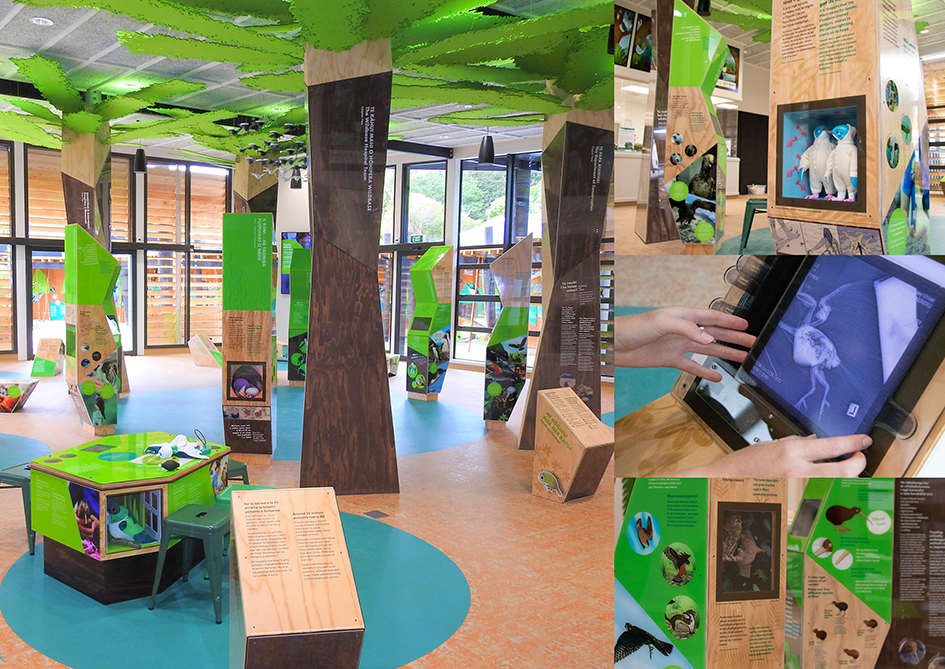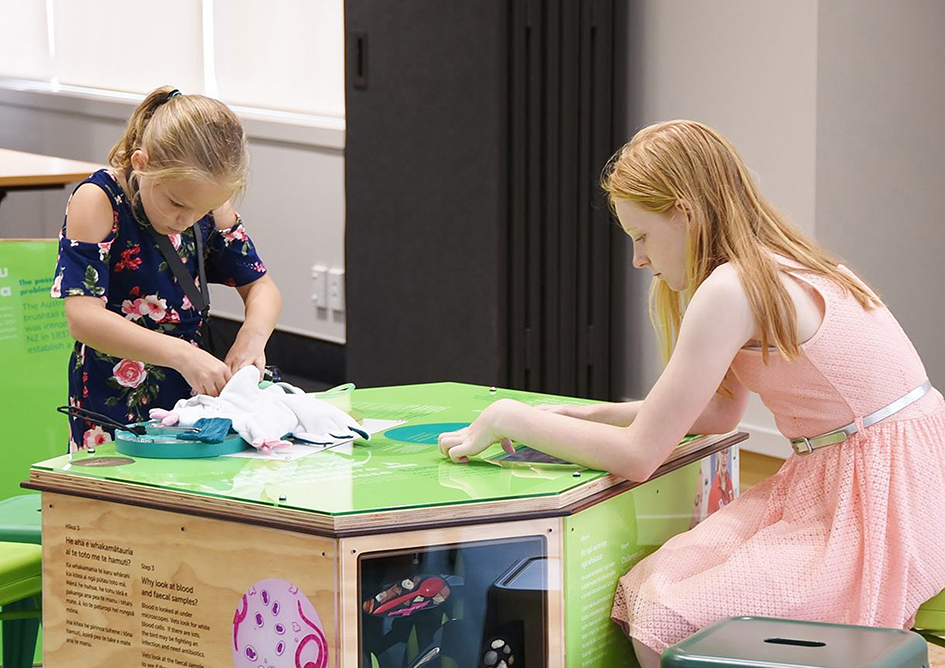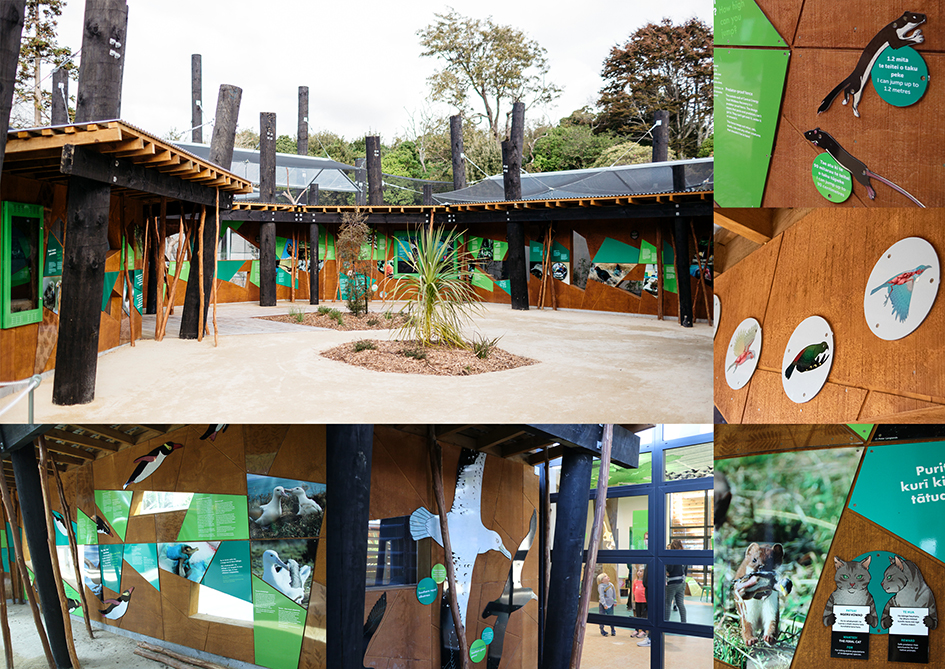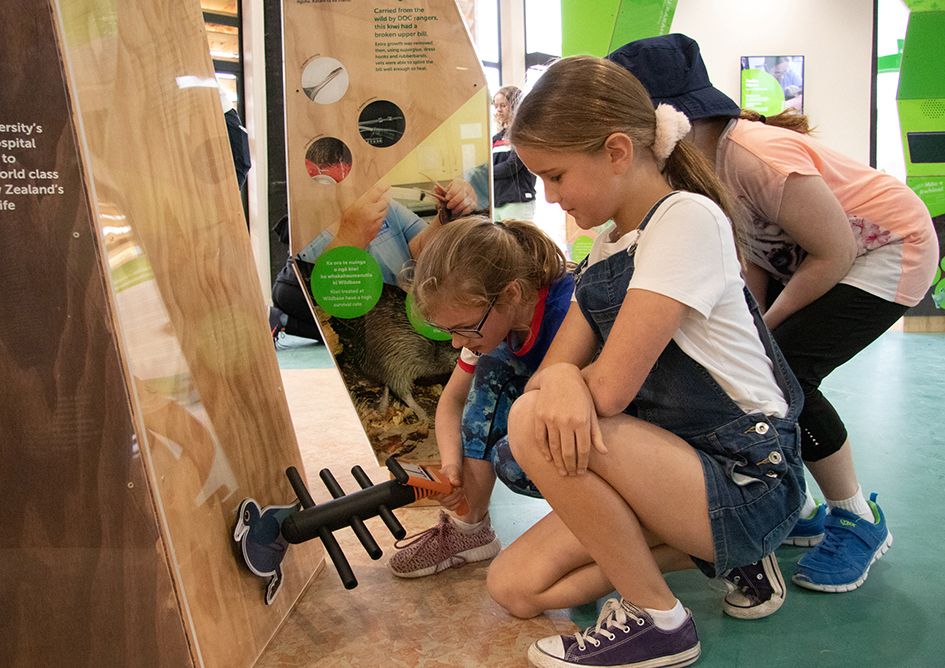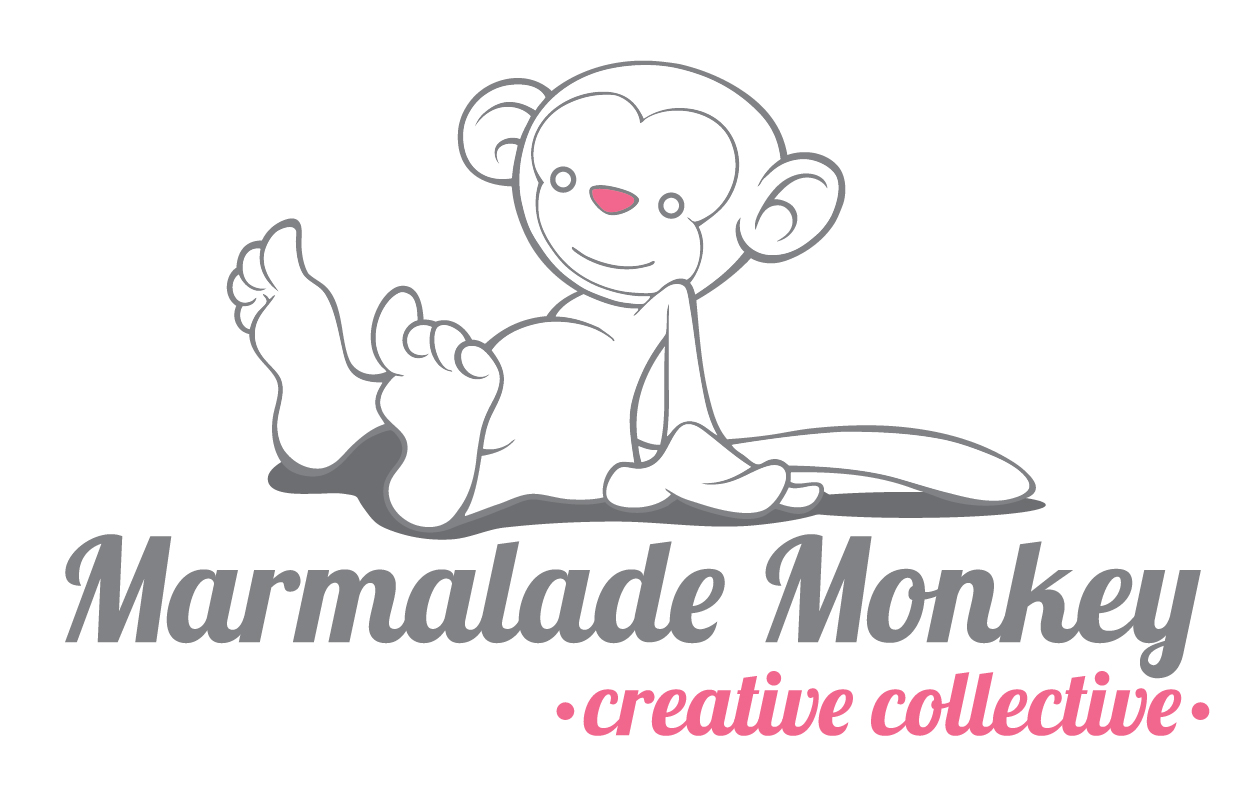Central Energy Trust WildBase Recovery
Central Energy Trust Wildbase Recovery (CETWR) is a unique experience, giving New Zealanders and international visitors a rare opportunity to engage with the stewardship of our native taonga. Located at Palmerston North’s Victoria Esplanade, CETWR comprises breeding and inflight walkthrough aviaries and nine rehabilitation aviaries, surrounding the PowerCo Education Centre. Wildbase Hospital veterinary wildlife specialists are onsite to rehabilitate ill or injured birds before they’re released back into the wild. Visitors can watch the vets in action and learn the story of each bird – its injuries, treatment and recovery. The PowerCo Education Centre takes manuhiri on a learning journey with displays and interactive and tangible opportunities for learning about animal welfare and conservation.
The design team was commissioned to conceptualise, design and fabricate all narrative, spatial, furniture, graphic, illustrative and interactive content within the education centre, and around the facility. In collaboration with mana whenua Rangitāne o Manawatū, kaitiaki of the native animals recovering here, the space is proudly and entirely bilingual.
The visual, shape and material language of the interior of the Education Centre is representative of a forest glade. The designers wanted to create both open and intimate spaces through the faceted design of the vertical, horizontal and single furniture “modules”. The modules are hand-crafted in plywood,with an etch and stain foliage pattern, and sheathed in acrylic panels with vinyl decals. Information is presented in graphic text, illustration, diorama, interactive and video format. Three key narratives form the space. The central zone, where the physical pillars of the space reference the mighty kauri, explores conservation, traversing the ecological history of Aotearoa, from pre-settler, through colonisation to contemporary conservation practices. The middle zone explores animals of Aotearoa.
Furniture design evokes a forest and presents a hierarchical information design. Six vertical modules frame the central glade and narrate the diversity of native taonga that arrive at CETWR. Beneath the canopy of leaf-like acoustic panels, the now extinct Huia and advocate for the birds of wildbase, is represented by the flock installation which faces in the direction of its last known sighting.The Huia tells her tale in a short animated film, narrated in Te Reo Māori by a Rangitāne wāhine, which introduces visitors to the space and sets the tone. Surrounding the glade are a hierarchy of horizontal modules focus on more difficult subjects of unwelcome predators, trauma and pathology – giving an insight into the role of vets and conservationists. Single modules advocate visitor action points highlighting the importance of healthy awa and ecosystem interconnectedness.
The outer zone is hands-on learning, exploring vets’ engagement with patients. Tables hold digital and physical interactive games that encourage tamariki to immerse themselves in the world of conservation – try out tricky surgery on a Kererū, diagnose illness, or use a telemetry tracker to find ‘hiding’ birds located throughout the centre. CETWR endeavours to empower the next generation to continue the kaitiakitanga of our native taonga.
Awards
Red Dot Award – Design Concept (2019)
Designers Institute Best Awards (2019)
- Finalist – Toitanga
- Finalist – Public Good Award
- Finalist – User Experience / Empowering

Credits
Design Director : Tanya Marriott, Michael Kelly, Stuart Foster
Design Team : Tanya Marriott, Michael Kelly, Stuart Foster, Connah Hazelwood, Bo Moore, Alex Love, Denzelle Marcovicci, Chaz McManus, Laya Mutton Rogers, Kezia Tubbs, Garry Buckley, Taylor Wickman, Phoebe Morris, Harry Brown, Caleb Sawtell, Emma Scheltema, Nyssa Skorji, John Strang, Leo Chida, Chris Swan.
Project Managers : Adrienne Potts, Jennah Rasmussen
Contributors: Hughes Joinery, Nina Mercer, Human Dynamo, Dusk Digital, Capture Signs, Rubber Band, Bill Thompson, Cameron Holder.
